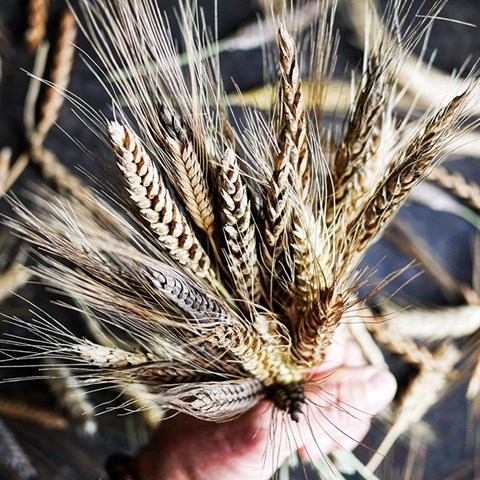What are heritage grains?

Many people are curious about heritage cereals – how are they different from conventional cereal grains? This project uses a definition that includes older cereal crops, native varieties and varieties that were developed before the 1960s, which have not been formally refined, but have genetically adapted to the local environment where they have grown.
Old cereal crops have many names – heritage grains, native varieties, historical cereal crops. There is no precise definition of what heritage grains are, but they are often original varieties from early farming that have not gone through modern refinement.
In this study we use the term ‘heritage cereals’, which includes older cereal crops, such as the more primitive forms of wheat, like emmer and Einkorn, which are different species than the modern wheat, albeit closely related. We also include native varieties and varieties developed before the 1960s, when industrial farming took over. The varieties that were refined early on, from the late 19th century to about 1960, often contained native Nordic varieties as parent species, so they had many genetic similarities.
Native varieties are called things like Öland wheat and Dalarna wheat and are a blended population of a domestic, cultivated plant that has not been formally refined, but has genetically adapted to the local environment where it was grown (Leino, 2017).
What characterises older grain varieties/heritage grains?
One of the added values with older grain varieties is the genetic variation within the variety. You can clearly see significant variation within a single variety – for example different maturity rates and different beard and stem lengths. Modern grain varieties have been refined to be more homogenous, which is beneficial in large-scale production because they all look the same.
Cereal grain refinement has focused on greater harvests and baking properties such as a strong gluten network for the bread industry, while flavour properties were not a priority. The older varieties produce smaller harvests and have smaller grains, but more flavour and high protein and mineral content.
Heritage grains are characterised by:
- Great genetic diversity
- Historical origins (pre-modern plant refinement) – ancient grain, native varieties, evolutionary varieties (mixture of many varieties)
- Often local connection
- Certain physical traits, such as taller and thinner stems, wider and deeper root systems, more robust growing pattern
- Lesser harvest than modern varieties
Heritage grains and biodiversity
All over the world, the diversity of cultivated plants is decreasing, both in the number of varieties and also within varieties. Two-thirds of the vegetables grown for human consumption consist of just nine crops, which makes our cultivation systems vulnerable, especially when climate change is going to lead to more droughts and flooding. In 2018, when Sweden experienced lasting drought throughout the summer, the country’s cereal grain harvest was halved.
One of the advantages of older cereal grain varieties is the genetic variation within the varieties. You can clearly see significant variation within a single variety – for example different maturity rates and different beard and stem lengths.
Heritage cereals are often grown in small-scale, organic cultivation systems, which leads to significant biodiversity of plants and animals compared with larger conventional farms that often practise monoculture on a large area, using pesticides and herbicides that further limit the species diversity.